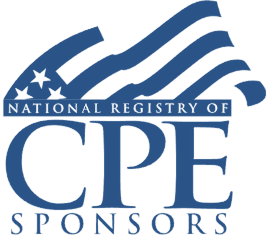- videocam Live Online with Live Q&A
- calendar_month December 17, 2025 @ 1:00 p.m. ET./10:00 a.m. PT
- signal_cellular_alt Intermediate
- card_travel Tax Preparer
- schedule 110 minutes
Taxable Partnership Distributions: Anticipating and Mitigating Tax Consequences to Partners and Members
Distributions in Excess of Basis, Disguised Sales, Distributing Precontribution Gain Assets, Payment of Debt
Welcome! Strafford is now BARBRI! The expert courses you know from the trusted global leader in legal education.
About the Course
Introduction
This webinar will review situations when partnership distributions create taxable income. The panelist will discuss distributions in excess of basis, disguised sales, and distributions of specific assets that result in taxable income to partners and members.
Description
A significant advantage that partnerships and LLCs have over other entity choices is that distributions of assets to partners and members are generally not subject to tax. In fact, IRC Section 731(a)(1) states: "gain shall not be recognized to such partner, except to the extent that any money distributed exceeds the adjusted basis of such partner's interest in the partnership immediately before the distribution." Distributions exceeding a partner's basis in a partnership can occur unknowingly.
Marketable securities are included in the definition of money and are distributed at fair market value. Distributing marketable securities, paying down partnership liabilities, or distributing ordinary income assets, for example, can create additional, often unanticipated, tax liability for a partner at year-end. Tax professionals advising pass-through entities need to understand when distributions to partners or members could have significant tax implications.
Listen as our panelist describes situations that give rise to taxable partnership distributions.
Presented By

Mr. Clayman has over 18 years of public accounting experience with a focus on for-profit businesses in many different industries. He has expertise in federal reporting and compliance for c-corporations, s-corporations, partnerships and limited liability companies. Mr. Clayman is highly experienced in analyzing all types of transactional documents, purchase and sale agreements, debt instruments, corporate documents and partnership agreements.
-
BARBRI is a NASBA CPE sponsor and this 110-minute webinar is accredited for 2.0 CPE credits.
-
BARBRI is an IRS-approved continuing education provider offering certified courses for Enrolled Agents (EA) and Tax Return Preparers (RTRP).
Date + Time
- event
Wednesday, December 17, 2025
- schedule
1:00 p.m. ET./10:00 a.m. PT
I. Taxable partnership distributions: introduction
II. Distributions in excess of basis
III. Reduction in partnership liabilities
IV. Disguised sales
V. Distributions of previously contributed property
VI. Disproportionate distributions
VII. Distributions of unrealized receivables and appreciated inventory
VIII. Other considerations
The speaker will cover these and other critical issues:
- How a reduction in partnership liabilities impacts a partner's basis
- Distributions of assets that are considered disguised sales
- Recognition of precontribution gain on property distributions
- Recommendations to circumvent unanticipated tax liability from distributions to partners
Learning Objectives
After completing this course, you will be able to:
- Identify distributions that are considered disguised sales
- Determine how a decrease in partnership liabilities can impact a partner's tax liability
- Decide how precontribution gains are taxed when the related property is distributed
- Ascertain steps to take to mitigate tax liability on certain distributions
- Field of Study: Taxes
- Level of Knowledge: Intermediate
- Advance Preparation: None
- Teaching Method: Seminar/Lecture
- Delivery Method: Group-Internet (via computer)
- Attendance Monitoring Method: Attendance is monitored electronically via a participant's PIN and through a series of attendance verification prompts displayed throughout the program
- Prerequisite:
Three years+ business or public firm experience preparing complex tax forms and schedules, supervising other preparers or accountants. Specific knowledge and understanding of pass-through taxation, including taxation of partnerships, S corporations and their respective partners and shareholders.

BARBRI, Inc. is registered with the National Association of State Boards of Accountancy (NASBA) as a sponsor of continuing professional education on the National Registry of CPE Sponsors. State boards of Accountancy have final authority on the acceptance of individual courses for CPE Credits. Complaints regarding registered sponsons may be submitted to NASBA through its website: www.nasbaregistry.org.

BARBRI is an IRS-approved continuing education provider offering certified courses for Enrolled Agents (EA) and Tax Return Preparers (RTRP).

BARBRI CE webinars-powered by Barbri-are backed by our 100% unconditional money-back guarantee: If you are not satisfied with any of our products, simply let us know and get a full refund. Contact us at 1-800-926-7926 .
Unlimited access to premium CLE courses:
- Annual access
- Available live and on-demand
- Best for attorneys and legal professionals
Unlimited access to premium CPE courses.:
- Annual access
- Available live and on-demand
- Best for CPAs and tax professionals
Unlimited access to premium CLE, CPE, Professional Skills and Practice-Ready courses.:
- Annual access
- Available live and on-demand
- Best for legal, accounting, and tax professionals
Unlimited access to Professional Skills and Practice-Ready courses:
- Annual access
- Available on-demand
- Best for new attorneys
Related Courses

Transfer Pricing: Practical Strategies and Cash-Saving Insights, Managing Tariffs
Tuesday, February 3, 2026
1:00 p.m. ET./10:00 a.m. PT

Tax Planning for Foreign Estates: Civil vs. Common Law Rules, Foreign Bequest and Estate Reporting, Wealth Transfers
Thursday, December 18, 2025
1:00 p.m. ET./10:00 a.m. PT

Usufructs: U.S. Taxation and Information Reporting, Minimizing Inheritance Tax in Other Countries
Thursday, November 20, 2025
1:00 p.m. ET./10:00 a.m. PT
Recommended Resources

How CPE Can Bridge the Gap Between What You Know and What You Need to Know
- Career Advancement


